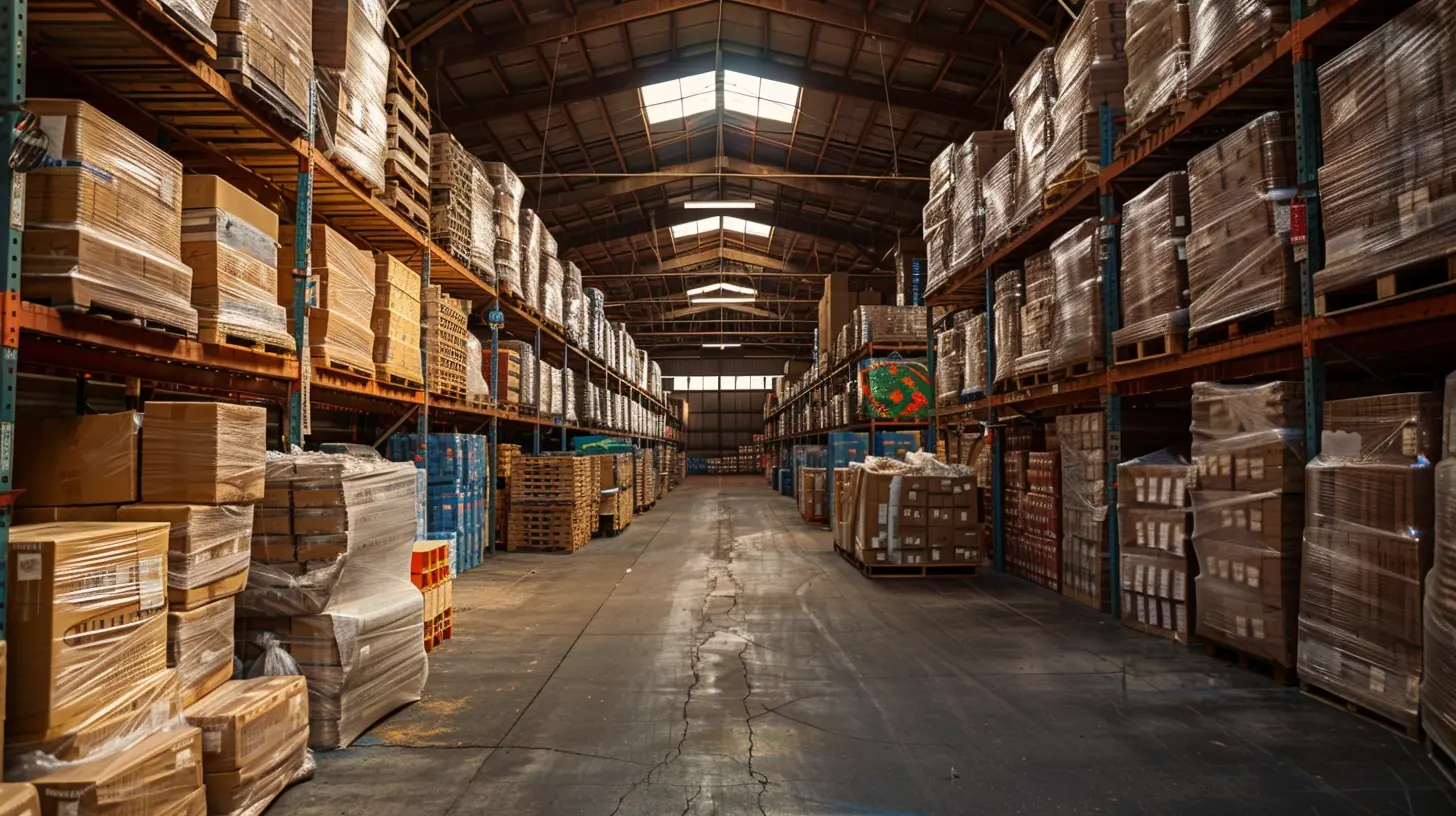How Business Inventories Signal Economic Turnarounds
8 October 2025
Have you ever wondered how economists figure out when the economy is about to take a turn—either up or down? While flashy headlines often talk about consumer spending, unemployment, or inflation, there's one quiet hero hiding in plain sight: business inventories.
Yep, those dusty shelves in warehouses and backrooms can actually tell us a whole lot about where the economy is headed. Whether it's a recovery from a recession or a sudden slowdown, changes in inventory levels often signal economic turning points before anyone else catches on.
In this article, we’re digging deep into how business inventories work as an economic indicator, why they matter, and how you—whether you're an investor, small business owner, or just curious—can keep an eye on them to better understand economic shifts.
What Are Business Inventories?
Let’s start with the basics. Business inventories are simply the goods that companies keep in stock. This includes everything from raw materials and work-in-progress items to finished products waiting to be sold.Think about your local electronics store. The shelves might be full of TVs, smartphones, and tablets. All of that contributes to the business's inventory. Now, scale that idea up across manufacturing, wholesale, and retail sectors throughout the entire economy... and that’s what economists are tracking when they talk about “business inventories.”
The U.S. Census Bureau actually publishes a monthly report on these inventories, and market analysts watch it closely. But why?
Why Business Inventories Matter
Alright, so why should we even care about a warehouse full of smartphones or a factory stacked with unsold sneakers?Because it tells us what’s about to happen.
Here’s the logic: Businesses are in the business of making money (duh). They don’t want too much unsold inventory lying around because it ties up cash and increases storage costs. And they definitely don’t want too little, or they might miss out on sales.
So, when inventories go up or down sharply, it can mean that demand is shifting—or that businesses think it will. That shift can be a strong clue that the economy is heating up... or cooling down.
Reading the Tea Leaves: Inventory Changes as Leading Indicators
Economists refer to inventories as a type of “leading indicator.” That means they can offer clues about future economic activity.Let’s break it down:
1. Rising Inventories Can Signal a Slowdown
Imagine a clothing retailer stocks up on winter jackets, expecting a cold season and strong sales. But then... the weather stays mild, and people don’t buy as much. The result? Leftover inventory.This scenario often happens across multiple industries during an economic slowdown. Consumer demand fades, sales drop, and inventories pile up.
Eventually, businesses stop ordering new products because they want to clear the ones they have. This leads to a drop in manufacturing, which ripples through suppliers and the labor market. Voila — the economy slows down.
2. Falling Inventories Can Signal Recovery
Now flip the script. Say the economy is rebounding after a slump. People start spending again, stores begin to sell through their products, and suddenly... shelves are looking bare.Businesses scramble to restock, which means more orders for manufacturers, more hours for workers, and more activity across the board. This inventory restocking cycle often marks the beginning of an economic upswing.
So, watching changes in inventory levels can be like reading the pulse of the economy.
The Inventory-to-Sales Ratio: A Key Metric
Economists love their ratios, and one of the most important in this context is the inventory-to-sales ratio.This metric tells us how long it would take to sell the current inventory at the current sales rate. It's super helpful because it adds context. An increase in inventory could be good or bad—depending on how fast things are selling.
Here's the formula:
Inventory-to-Sales Ratio = Total Inventory / Total Sales- A high ratio means businesses are holding onto products longer—possibly a warning sign.
- A low ratio suggests products are flying off the shelves—often a sign of economic strength.
Watching this ratio over time provides a clearer picture than looking at inventory alone.
Historical Examples: Inventories and Recessions
Let’s take a stroll down memory lane and see how inventories have played into past economic turning points.The 2008 Financial Crisis
In the run-up to the Great Recession, inventory levels climbed because demand was falling off a cliff. Retailers and manufacturers misjudged how deep the downturn would go. As a result, businesses had to slash production, lay off workers, and halt new orders—deepening the recession.But once the economy found a bottom in 2009, inventories began to shrink rapidly. This forced businesses to start restocking, which helped kickstart the recovery.
COVID-19 and the 2020 Roller Coaster
Fast forward to 2020. The pandemic caused an instant shock. Supply chains broke, consumer behavior flipped, and inventories dropped like a rock. Once demand roared back in late 2020 and into 2021, businesses couldn't restock fast enough. This led to record-low inventory-to-sales ratios and triggered a surge in production.But then, inflation fears kicked in, and some businesses overstocked again—highlighting how inventories are not just a consequence of the economy, but also help shape it.
Bullwhip Effect: When Inventories Go Wild
Ever heard of the "bullwhip effect"? No, it's not something from a rodeo—it’s an inventory phenomenon.It happens when small changes in consumer demand lead to much larger swings in inventory orders up the supply chain. It’s like how a tiny flick of your wrist makes a whip snap hard.
For example, if a retailer sees a slight uptick in demand for sneakers, they might double their order to play it safe. The wholesaler, seeing a spike in orders, triples their own from the manufacturer. Before you know it, factories are producing way more than needed. If demand doesn’t keep up, inventory bloats—and a correction follows.
This effect can make it tricky to interpret inventory data—but also makes it even more important to track.
Inventories and GDP: The Growth Connection
Here’s something a lot of people miss: inventory changes are directly included in GDP calculations.That’s right—when inventories increase, they add to GDP growth. When they drop, they drag it down.
But here’s the kicker: not all inventory growth is good. If inventories are rising because sales are strong and businesses are scaling up, that's great. But if inventories are bloated because demand is drying up, it's a red flag.
So, when you hear about a strong GDP quarter driven by inventory buildup, dig a little deeper. The details matter.
How Investors Use Inventory Data
If you’re an investor, you can use inventory trends to spot opportunities—and risks.- A sudden rise in inventories? Might be time to go cautious on retail stocks.
- Inventories getting lean? Could be a buying signal for manufacturers or logistics firms.
Inventory levels also hint at broader sectors—like transportation, warehousing, or even commodities—since they’re all tied to how goods are produced, stored, and delivered.
Even central banks keep an eye on inventory data when making interest rate decisions. It’s that important.
How to Track Business Inventories
Want to keep an eye on this sneaky signal yourself? Here's where to look:- Monthly Wholesale Trade Report from the U.S. Census Bureau: Includes inventory data for wholesalers.
- Manufacturing and Trade Inventories and Sales (MTIS): A broader monthly report covering manufacturers, retailers, and wholesalers.
- Federal Reserve Economic Data (FRED): Great for charts and historical data.
These are free to access and easy to interpret with a bit of practice.
Final Thoughts: Small Numbers, Big Insights
Inventories might not be the flashiest part of economic analysis, but they’re one of the most telling. Kind of like reading footprints in the forest—you can figure out where people have been and where they might be going.By keeping an eye on rising or falling inventory levels and understanding the stories behind them, you can gain a valuable edge—whether you’re making investment decisions, running a business, or just trying to wrap your head around what’s going on in the world.
Next time you hear someone mention “inventory adjustments,” don’t tune out. That might just be the whisper before the economic shout.
all images in this post were generated using AI tools
Category:
Economic IndicatorsAuthor:

Knight Barrett
Discussion
rate this article
1 comments
Astra McRae
This article effectively highlights the critical role of business inventories in predicting economic shifts. By analyzing inventory levels, businesses can anticipate consumer demand and adjust strategies accordingly. Understanding these signals can provide valuable insights for investors and strategists navigating potential economic turnarounds. Great insights!
October 16, 2025 at 11:07 AM

Knight Barrett
Thank you for your thoughtful comment! I'm glad you found the insights on business inventories valuable for understanding economic shifts.


